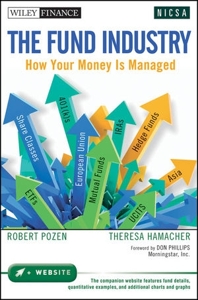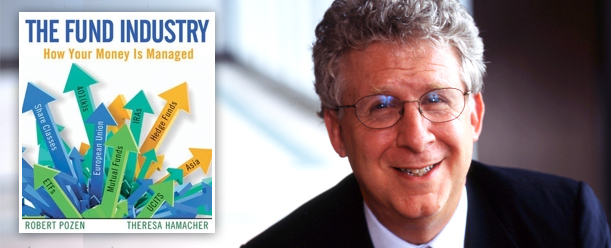We’ve written for a while that for certain purposes, Exchange Traded Funds (ETFs) are a better mousetrap.
As Mutual Funds 2.0, ETFs have introduced:
- new ways to implement investing ideas (eg. country exposure to Poland, Chile, etc.)
- made existing ideas easier to trade (leveraged long and short funds, buy-write strategies)
- provided continuous pricing (unlike Mutual Funds that price once at the end of the day)
- more competitive management fee structure (ETFs are typically passive investment tied to an index)
- eased the tax burden (some ETFs are able to pass on very little capital gains to the investor either through legal loopholes or just low turnover of the portfolio)
Mirroring as a new investment model
What’s true of ETFs is also true for new investment models, called mirroring. Trade mirroring allows investors to synch their online brokers with a portfolio manager’s every move. Unlike a traditional mutual fund manager who pools assets together, newer structures have portfolio managers managing a theoretical model (3% in X, 5.5% in Y, etc.). This model is executed in client accounts (which are typically held elsewhere). When a portfolio manager makes a change in the portfolio, it is then mirrored in the client account. See this example of a mirrored account that tracks Warren Buffett’s moves.
Pricing is typically competitive to similar mutual fund strategies and investors pay a management fee + some fee whenever a trade is executed in their accounts. Because assets are held in the investor’s own account and not comingled (like in mutual funds), the investor never has to share in gains or losses of the fund as a whole — in fact, the investor has some leeway to practice tax loss selling as well to pair losses vs. gains. In this sense, mirrored accounts are much more tax efficient when compared to mutual funds.
Brokers have sold these types of accounts for years, called Separately Managed Accounts (SMAs), where investors could get access to some of the world’s best asset managers with just a fraction of the assets typically required to access these managers. Now, we’re seeing the same models rolled out to do-it-yourself (DIY) investors.
It’s these last 2 benefits of newer investment vehicles – lower management fees and softer tax burden — that’s become an interesting bone of contention in the ongoing tug-of-war between the mutual fund industry and new emerging types of asset managers (including, but not only, ETFs).
Disagreement over *real* pricing
kaChing, an expert investing community which allows investors to invest alongside rising-star portfolio managers, recently introduced its own analysis (along with help from Lipper), that shows the average fees charged by mutual funds are much higher than investors typically realize — averaging over 3%.
In an article last week on the Wall Street Journal entitled “Mutual Fund Fee Debate Heats Up” (sub required), Ian Salisbury compares kaChing’s findings to those of the mouthpiece of the mutual fund industry, the Investment Company Institute (ICI). As the WSJ reports that the ICI’s tally of the average fees charged on mutual funds hovered just over 1%.
So which is it — >3% or >1? Clearly the answer is very important for investors. Why? Because investing is a simple formula:
Net investment returns = Gross investment returns – taxes – fees
Given that higher taxes eat away at any return we get, lowering taxes is extremely important. If kaChing’s numbers are correct, there’s no way the average mutual fund can even come close to beating the markets.
Couple of caveats to think about here:
- We’re dealing with averages here: If the average mutual fund (with 60% turnover per year, as per the ICI’s 2008 Factbook) passes through such a high tax burden to its investors loses versus index funds, that’s not to say that certain funds do charge less and return more. Let’s not throw the entire mutual fund baby out with the fee bathwater.
- kaChing’s execution costs for high turnover portfolios: kaChing will be producing a side-by-side analysis of their typical costs vs. those of the average mutual fund in the upcoming moths. While kaChing (and competitor, Covestor) may indeed have lower management fees and be a lot more tax sensitive for investors, their execution costs (typically $.02/share) will eat up gains. High volume turnover will still eat into profits. Investors will continue to pay for professional portfolio management.
- Transparency typically benefits the investor: It’s hard to tell exactly what mutual funds charge their investors. Consequently, firms like kaChing are competing head-on with mutual funds and appealing to average investors by attacking the industry’s Achilles Heel: transparency. They are banking that, as social media’s Facebook and Twitter phenomena have created new levels of visibility, so too investors will demand it in the financial industry.
- Fees are important but not the only factor: Too many times investors will forgo professional management because they feel the fees are too high. While that may be relatively true, there are other factors on which an appropriate investment must be sized up (risk-weighted returns is a huge one for individual investors to better understand). Everyone on all sides of the aisle is trying to sell you something — caveat emptor. There are no free lunches.
Anyway, check out the kaChing analysis, read what the WSJ had to say, and I’d be interested to hear your feedback.












 actually own (most of the time this occurs sometime after hitting some single malt before bed and sometime before day break). I dunno — I read the labels on food that I ingest. Just thought it might be interesting to know what’s in the mutual fund into which I invested all my life’s savings. Just for kicks, you know?
actually own (most of the time this occurs sometime after hitting some single malt before bed and sometime before day break). I dunno — I read the labels on food that I ingest. Just thought it might be interesting to know what’s in the mutual fund into which I invested all my life’s savings. Just for kicks, you know?
